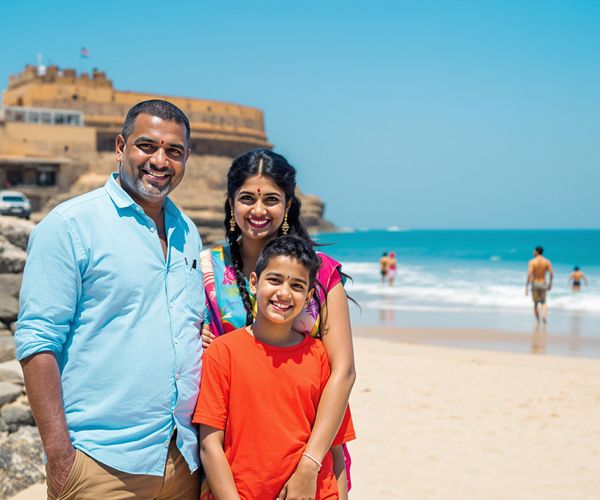
Panaji: The Heart of Goa's Enchanting Charm
Explore Panaji, Goa's capital city, known for its Portuguese heritage, scenic waterfronts, vibrant markets, and delectable cuisine. A perfect blend of tradition and modernity.
Panaji, the capital of the Indian state of Goa, is a city that beautifully blends the old with the new. Nestled along the banks of the Mandovi River, Panaji is a tapestry of picturesque Portuguese-era architecture, vibrant markets, and serene waterfronts. The city’s quaint charm is accentuated by its colorful, tiled-roofed houses, narrow winding streets, and lush gardens. Walking through Panaji, tourists can visit the iconic Church of Our Lady of the Immaculate Conception, a stunning white-washed structure that stands as a testament to the city’s colonial past. The Latin Quarter of Fontainhas is another gem, offering a glimpse into Panaji’s rich cultural heritage with its narrow lanes, art galleries, and traditional Goan homes. Panaji is also a gastronomic delight, with a plethora of restaurants and cafes offering a variety of local and international cuisines. From savoring authentic Goan fish curry to enjoying a cup of feni, the local cashew liquor, the city’s culinary scene is sure to tantalize your taste buds. Moreover, Panaji’s vibrant markets, like the bustling Panaji Market and the quaint 18th June Road, are perfect for shopping for souvenirs, spices, and handicrafts. The city is also a hub for cultural and recreational activities. The Kala Academy is a center for the arts, hosting a range of performances from drama to music. For nature lovers, a stroll along the Miramar Beach or a visit to the Dr. Salim Ali Bird Sanctuary offers a peaceful retreat from the hustle and bustle of city life. With its rich history, cultural vibrancy, and natural beauty, Panaji is a must-visit destination for any traveler exploring Goa.
Local tips in Panaji
- Visit the Church of Our Lady of the Immaculate Conception early in the morning to avoid crowds and enjoy the peaceful atmosphere.
- Take a walk through Fontainhas in the late afternoon to capture the best light for photography.
- Try the local Goan cuisine at the many small, family-run restaurants for an authentic experience.
- Shop for spices and local handicrafts at the Panaji Market for unique souvenirs.
- Use local taxis or rent a scooter to explore the city and its surroundings at your own pace.
- Attend a cultural event at the Kala Academy to experience Goa's vibrant arts scene.
- Visit the Dr. Salim Ali Bird Sanctuary early in the morning for the best chance to see a variety of bird species.
Neighbourhoods in Panaji
Panaji: The Heart of Goa's Enchanting Charm
Panaji, the capital of the Indian state of Goa, is a city that beautifully blends the old with the new. Nestled along the banks of the Mandovi River, Panaji is a tapestry of picturesque Portuguese-era architecture, vibrant markets, and serene waterfronts. The city’s quaint charm is accentuated by its colorful, tiled-roofed houses, narrow winding streets, and lush gardens. Walking through Panaji, tourists can visit the iconic Church of Our Lady of the Immaculate Conception, a stunning white-washed structure that stands as a testament to the city’s colonial past. The Latin Quarter of Fontainhas is another gem, offering a glimpse into Panaji’s rich cultural heritage with its narrow lanes, art galleries, and traditional Goan homes. Panaji is also a gastronomic delight, with a plethora of restaurants and cafes offering a variety of local and international cuisines. From savoring authentic Goan fish curry to enjoying a cup of feni, the local cashew liquor, the city’s culinary scene is sure to tantalize your taste buds. Moreover, Panaji’s vibrant markets, like the bustling Panaji Market and the quaint 18th June Road, are perfect for shopping for souvenirs, spices, and handicrafts. The city is also a hub for cultural and recreational activities. The Kala Academy is a center for the arts, hosting a range of performances from drama to music. For nature lovers, a stroll along the Miramar Beach or a visit to the Dr. Salim Ali Bird Sanctuary offers a peaceful retreat from the hustle and bustle of city life. With its rich history, cultural vibrancy, and natural beauty, Panaji is a must-visit destination for any traveler exploring Goa.
When is the best time to go to Panaji?
Iconic landmarks you can’t miss
Aguada Fort
Explore Aguada Fort, a historic fortress in Goa that offers stunning views, rich history, and a glimpse into Portugal's colonial past.

Deltin Royale
Explore the glitz of Deltin Royale, Goa's premier casino offering thrilling games, exquisite dining, and vibrant entertainment on the Mandovi River.
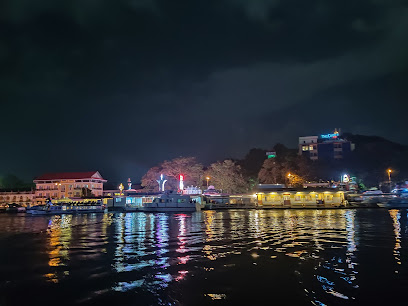
Immaculate Conception Church
Explore the stunning Immaculate Conception Church in Panaji, Goa, a historic architectural marvel offering breathtaking views and serene spiritual ambiance.

Big Daddy Casino
Discover the excitement of Big Daddy Casino in Goa, where gaming meets entertainment on the beautiful Mandovi River.
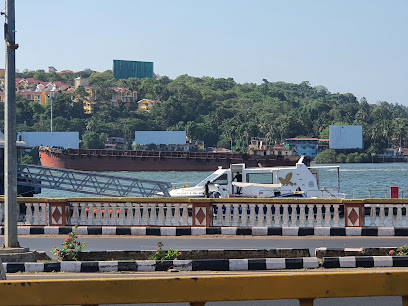
The Fisherman's Wharf Panjim
Discover the authentic flavors of Goa at The Fisherman's Wharf Panjim, where seafood and cocktails meet a vibrant culinary experience.
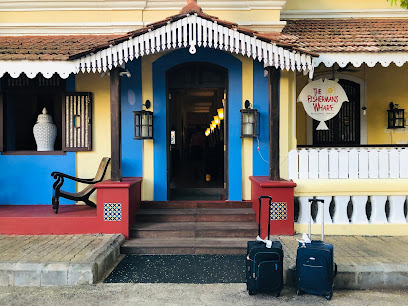
Casino Pride
Experience the thrill of gaming and vibrant nightlife at Casino Pride in Goa – a premier destination for entertainment and excitement.
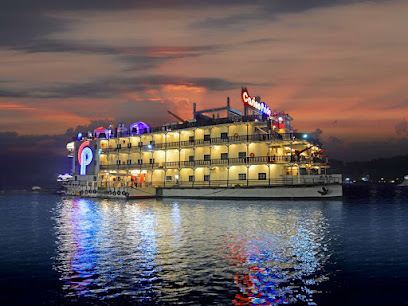
Reis Magos Fort
Experience the historic charm of Reis Magos Fort, a 16th-century gem overlooking the Mandovi River in Goa, perfect for history buffs and nature lovers alike.
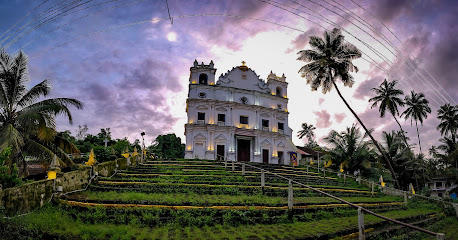
Panjim Bus Stand
Experience the vibrant heart of Panaji at Panjim Bus Stand, your gateway to exploring the beauty and culture of Goa.
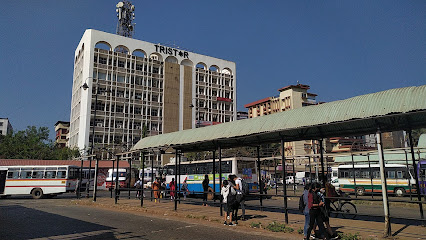
Deltin Jaqk
Experience the thrill of gaming and exquisite dining at Deltin Jaqk, Goa's premier floating casino on the Mandovi River.
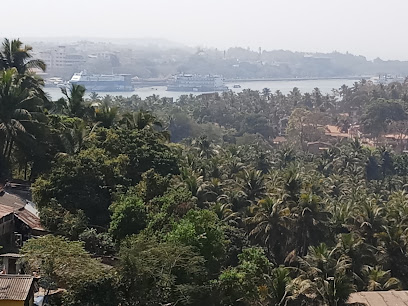
Salim Ali Bird Sanctuary
Explore the lush landscapes of Salim Ali Bird Sanctuary in Goa, a paradise for birdwatchers and nature enthusiasts with diverse avian species and serene trails.
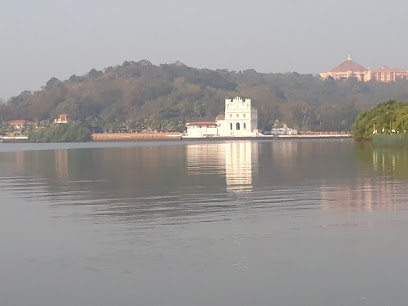
St. Augustine Tower
Explore the captivating St. Augustine Tower, a historic landmark in Old Goa, showcasing stunning architecture and rich colonial history.
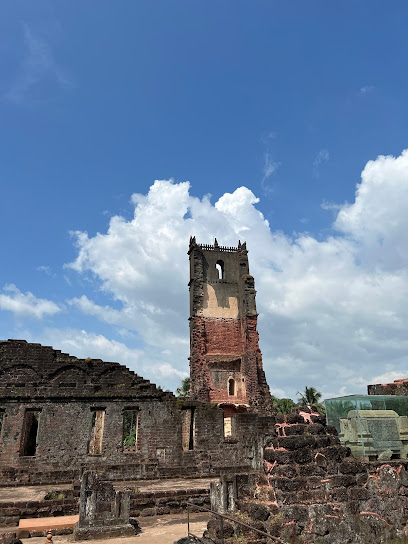
Joseph Bar
Experience the vibrant culinary culture of Goa at Joseph Bar, a top tapas bar in Panaji with creative dishes and a welcoming atmosphere.
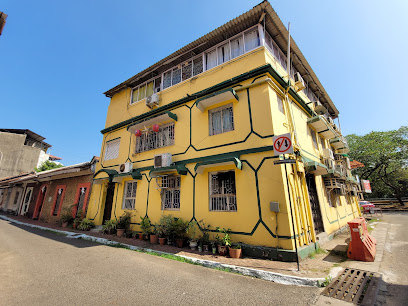
Caravela Cafe And Bistro
Discover the culinary delights of Caravela Cafe and Bistro in Panaji, offering a perfect blend of local flavors and global cuisine in a cozy atmosphere.
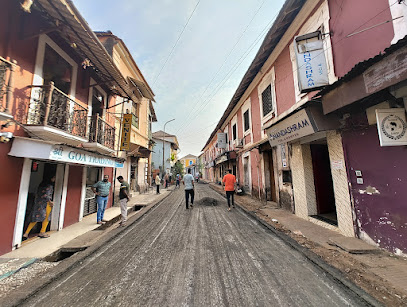
The Hotel Mandovi Maruti
Experience the charm of Goa at The Hotel Mandovi Maruti, a tranquil guest house overlooking the Mandovi River, perfect for relaxation and exploration.

Campal Gardens
Explore the tranquil beauty of Campal Gardens, a lush haven in Panaji, Goa, perfect for relaxation, picnics, and family outings amidst vibrant nature.
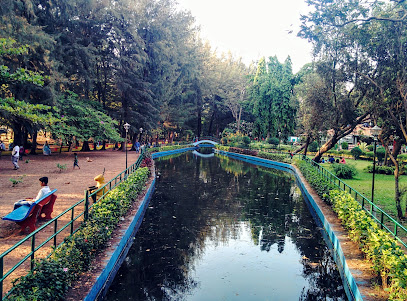
Unmissable attractions to see
Aguada Fort
Explore the historic Aguada Fort in Goa, a stunning fortress offering breathtaking views and a glimpse into the region's rich past.
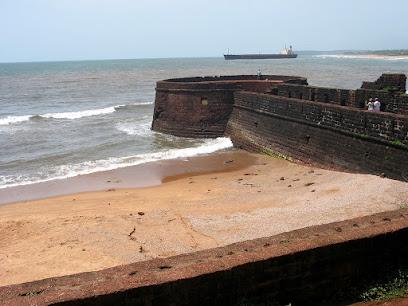
Basilica of Bom Jesus
Explore the majestic Basilica of Bom Jesus in Old Goa, a UNESCO World Heritage Site rich in history and stunning baroque architecture.
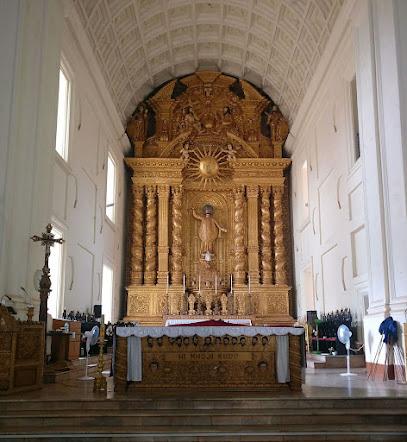
Dona Paula View Point
Discover breathtaking coastal views and rich folklore at Dona Paula View Point, a must-visit attraction in the heart of Goa.
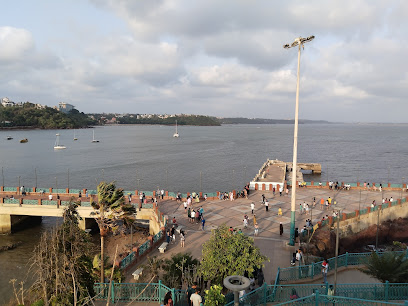
Deltin Royale
Discover the thrill of gaming and gourmet dining aboard Deltin Royale, Goa's luxurious floating casino on the Mandovi River.

Calangute Beach
Discover the vibrant atmosphere of Calangute Beach, where sun, sea, and local culture converge to create unforgettable memories in Goa.
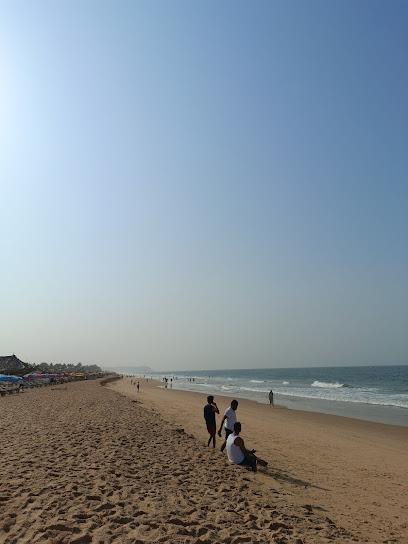
Immaculate Conception Church
Visit Immaculate Conception Church, a stunning architectural marvel in Panaji, Goa, showcasing rich history and serene ambiance amidst vibrant local culture.

Shree Mangueshi Temple
Experience the spiritual essence of Goa at Shree Mangueshi Temple, a beautiful sanctuary of peace and devotion amidst vibrant culture.

Sinquerim Beach
Discover Sinquerim Beach in Goa, where golden sands, crystal-clear waters, and rich history come together for an unforgettable seaside escape.
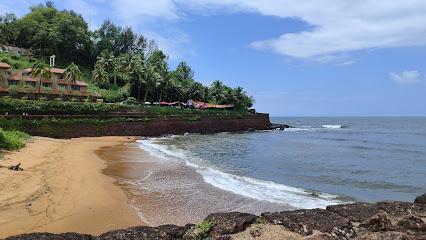
Anjuna Beach
Discover the vibrant charm of Anjuna Beach in Goa, a perfect blend of relaxation, adventure, and cultural experiences under the sun.
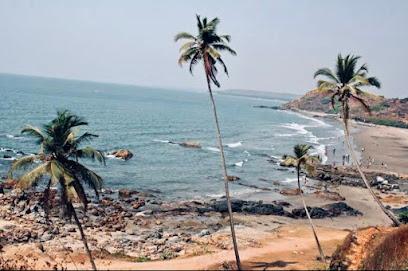
Snow Park, Goa
Experience winter fun in the heart of Goa at Snow Park, a thrilling indoor snow center and amusement park for all ages.
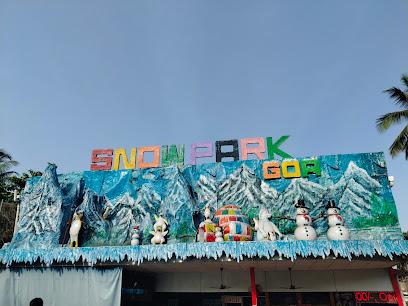
Reis Magos Fort
Discover the rich history and stunning views at Reis Magos Fort, a captivating heritage site in Goa, perfect for travelers seeking adventure and culture.
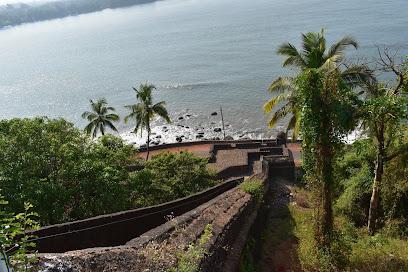
Shree Shantadurga Temple
Explore the spiritual heart of Goa at Shree Shantadurga Temple, a serene sanctuary showcasing rich traditions and breathtaking architecture.

Museum of Goa, MOG
Explore the vibrant artistic essence of Goa at the Museum of Goa, where tradition meets modern creativity in a stunning setting.
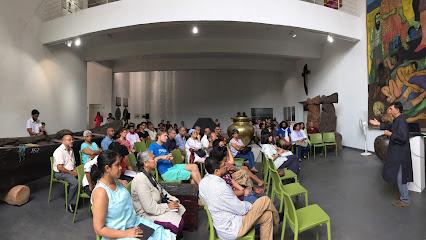
Big Foot Goa
Explore Big Foot Goa, a captivating museum and art gallery in Loutolim, showcasing the rich cultural heritage and artistry of Goa.
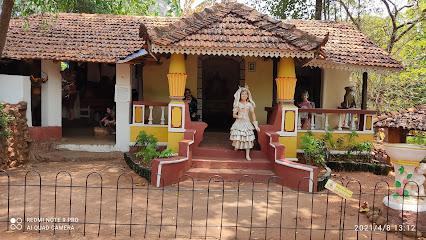
Se Cathedral
Explore the grandeur of Se Cathedral in Old Goa, a UNESCO World Heritage site showcasing stunning Portuguese-Gothic architecture and rich cultural heritage.
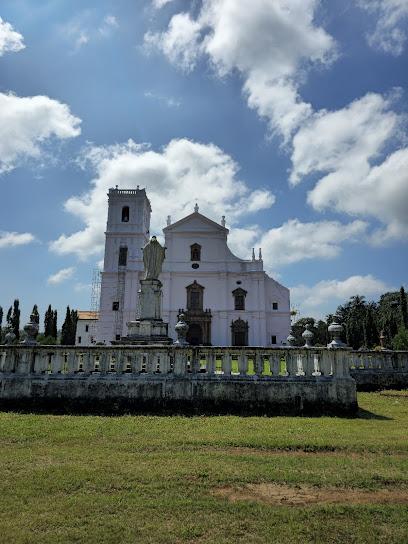
Essential places to dine
The Fisherman's Wharf Panjim
Experience the flavors of Goa at The Fisherman's Wharf Panjim - where seafood meets tradition in a vibrant setting.
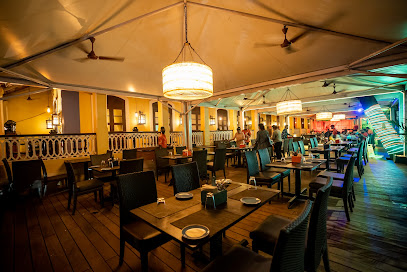
Ritz Classic Panjim
Experience authentic Goan seafood at Ritz Classic Panjim - where fresh flavors meet vibrant ambiance in the heart of Goa.
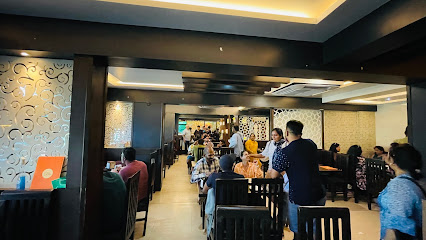
The Black Sheep Bistro
Discover culinary excellence at The Black Sheep Bistro in Panaji - where local flavors meet modern gastronomy.
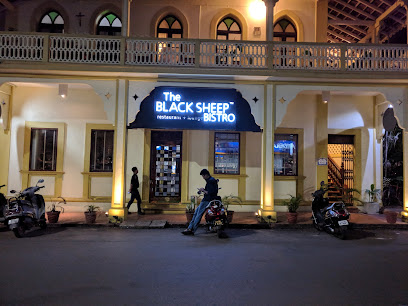
Navtara Veg Restaurant
Experience authentic vegetarian cuisine at Navtara Veg Restaurant in Panaji's bustling market area, where flavor meets tradition.
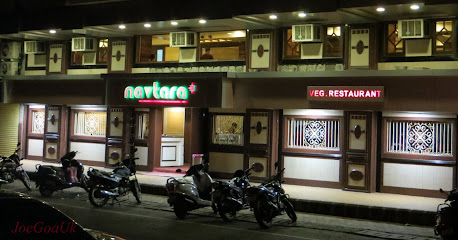
Kokni Kanteen Goa
Discover authentic Goan seafood at Kokni Kanteen in Panaji—where every dish tells a story of culture and tradition.

Ritz Classic-Patto
Experience the best of Goan cuisine at Ritz Classic-Patto - a seafood lover's paradise in the heart of Panaji.
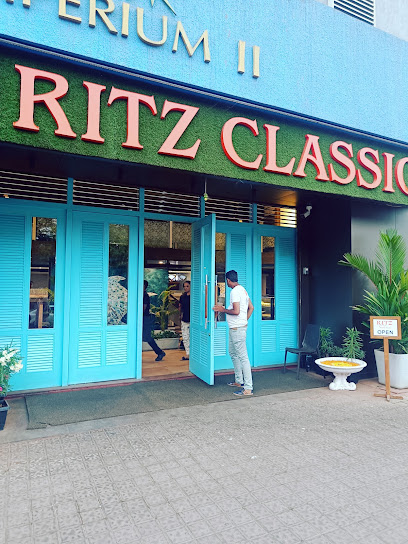
Sher-E-Punjab Goa
Experience authentic Punjabi cuisine blended with Goan flavors at Sher-E-Punjab in Panaji - A must-visit dining destination for food lovers.
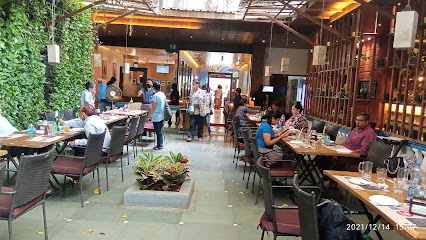
Mum's Kitchen
Experience authentic Goan flavors at Mum's Kitchen in Panaji – a culinary delight where tradition meets taste.
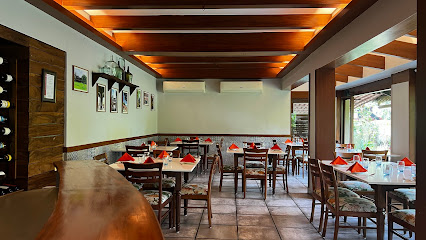
Peep Kitchen
Experience the best of Goan and Asian cuisine at Peep Kitchen in Panaji - a delightful culinary journey awaits you!
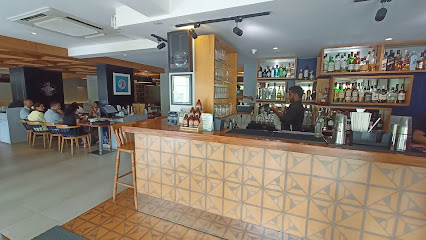
Barbeque Nation
Experience the best of Indian barbecue at Barbeque Nation in Goa - where grilling meets gourmet delight!
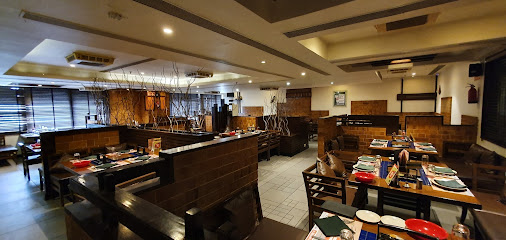
Soul Curry, Panjim
Experience Goa's culinary diversity at Soul Curry in Panjim - where every dish tells a story.
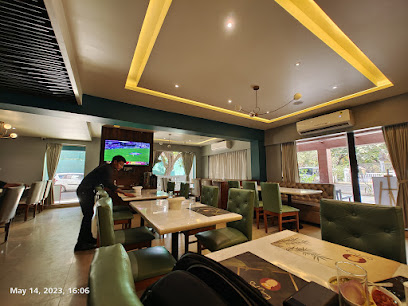
Viva Panjim
Experience authentic Goan cuisine at Viva Panjim - a family-friendly restaurant blending Indian, Chinese & Portuguese flavors in vibrant Panaji.
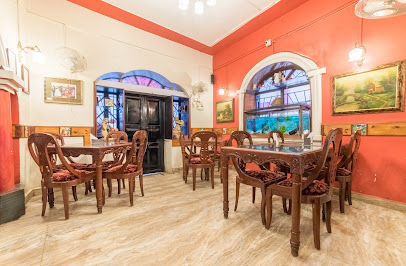
Kailash Parbat- Pure Vegetarian Restaurant
Experience authentic vegetarian cuisine at Kailash Parbat in Panaji – where every meal is a celebration of India's rich culinary heritage.
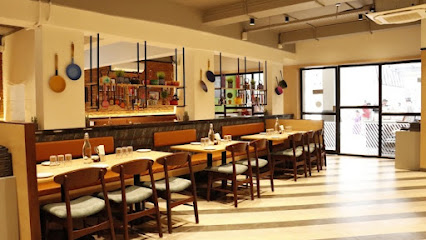
Copperleaf Panaji
Experience authentic Indian cuisine at Copperleaf Panaji - where tradition meets modern flair in every delicious bite.
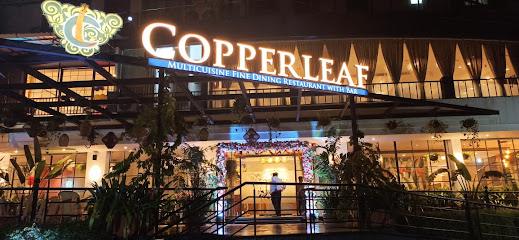
Sanyog Veg Restaurant
Discover delectable South Indian and Chinese vegetarian dishes at Sanyog Veg Restaurant in Panaji, Goa – a must-visit culinary destination.
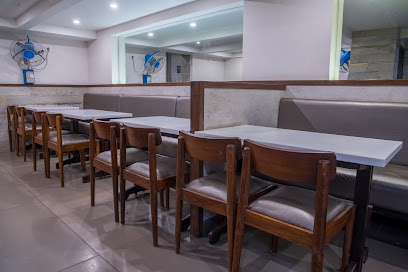
Markets, malls and hidden boutiques
Bombay Bazar
Discover unique clothing pieces at Bombay Bazar, a vibrant shopping destination in Goa's Altinho, where culture meets fashion.
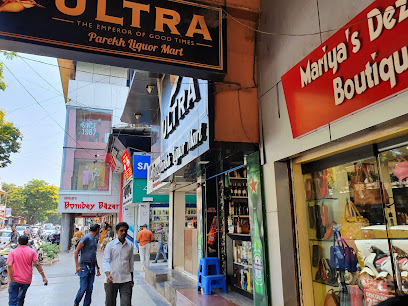
AND Caculo Mall
Explore the stylish AND Caculo Mall in Goa, a vibrant destination for Western apparel and trendy accessories catering to every fashionista's needs.
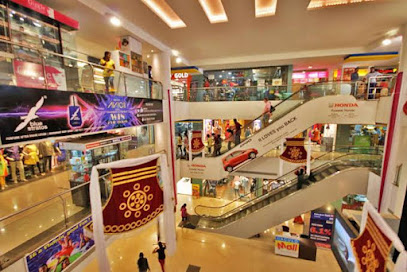
Fabindia, Campal, Panjim
Explore Fabindia in Panjim for authentic Indian clothing and home goods that celebrate the rich heritage of India's craftsmanship.
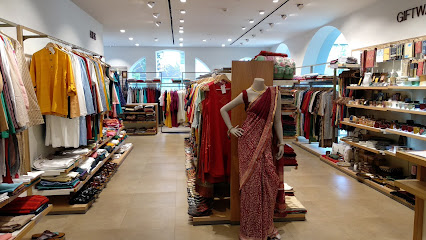
Bharne Creations
Discover the best of designer fashion and custom tailoring at Bharne Creations, a premier clothing store in Panaji, Goa.
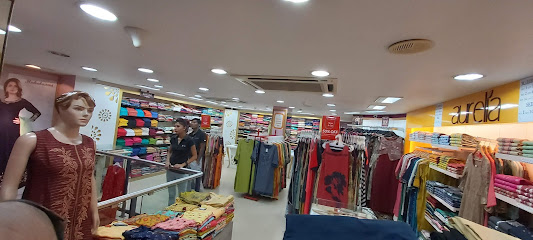
Champs Boutique
Discover the finest selection of sportswear in Panaji at Champs Boutique, where quality meets style for your active lifestyle.

Nike Store
Discover the latest in athletic fashion at the Nike Store in Panaji, Goa, where performance meets style in an exciting shopping experience.
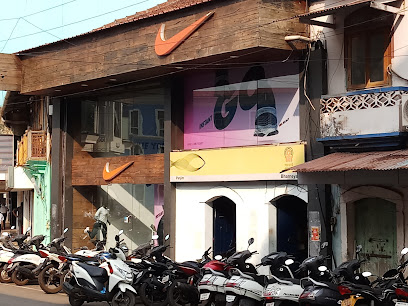
Pantaloons (Dr. P Shivgaonkar Road, Panjim, Goa)
Discover stylish clothing for the whole family at Pantaloons in Panjim, Goa - your one-stop fashion destination.
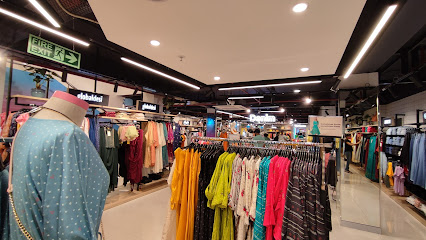
Levi's Exclusive Store-Panaji
Explore the Levi's Exclusive Store in Panaji for a stylish shopping experience with iconic denim and trendy apparel.

Shenaz Shopping Centre
Discover a unique shopping experience at Shenaz Shopping Centre in Panaji, Goa, featuring local crafts, gourmet foods, and delightful gifts.

Fashion Mark
Discover unique bridal and women's clothing at Fashion Mark, a premier boutique in Panaji, Goa, known for its exquisite designs and personalized service.
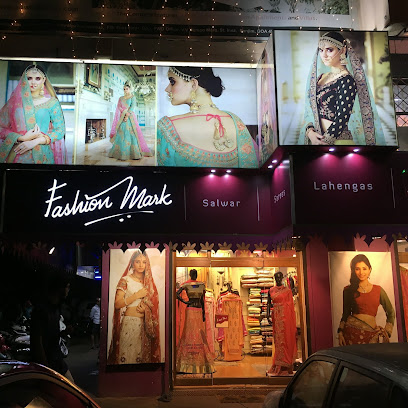
WALKOVER - The Toys & Baby Mega Store
Explore WALKOVER, Goa's premier toys and baby store, offering a vast selection of products for children and families in the heart of Panaji.
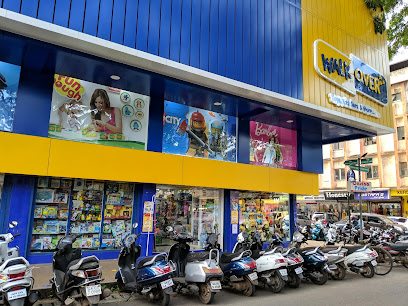
O.M.O
Discover unique fashion at O.M.O in Panaji, Goa, where style meets local craftsmanship in a vibrant shopping experience.
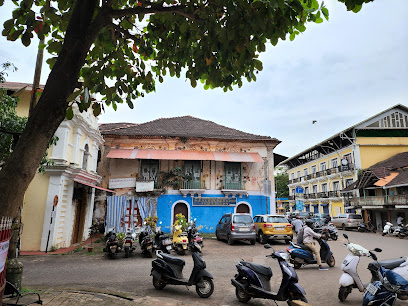
Mario Gallery
Explore Mario Gallery in Goa for unique souvenirs, local art, and handcrafted treasures that encapsulate the spirit of the region.
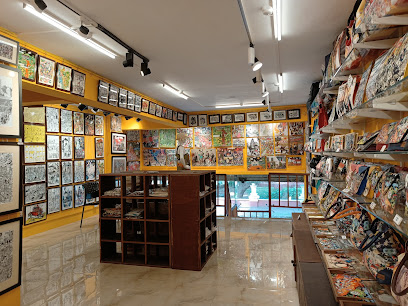
99 Store
Explore the enchanting 99 Store in Goa, where unique gifts and local treasures await every traveler in the vibrant New Municipal Market.
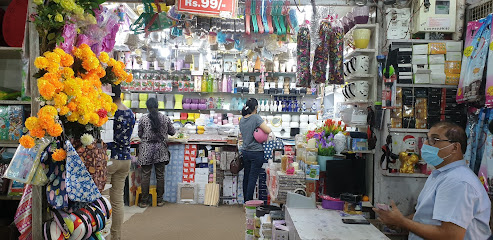
Benz Handloom House
Explore the vibrant world of handloom textiles at Benz Handloom House in Goa, where tradition meets contemporary design.
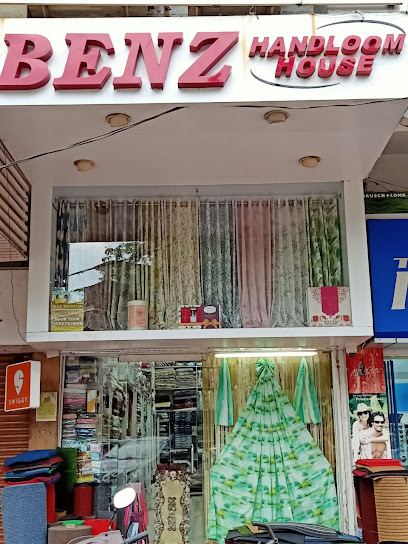
Essential bars & hidden hideouts
Joseph Bar
Experience the lively atmosphere and delicious Goan tapas at Joseph Bar in Panaji, the heart of Goa's vibrant culinary scene.
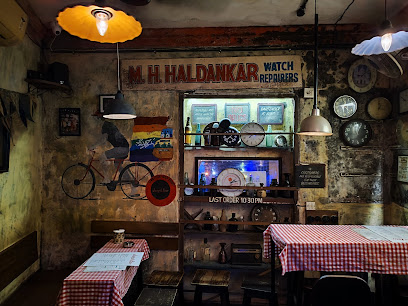
Temptations Bar and Restaurant
Experience the vibrant flavors of Indian cuisine at Temptations Bar and Restaurant, a must-visit dining gem in the heart of Goa.
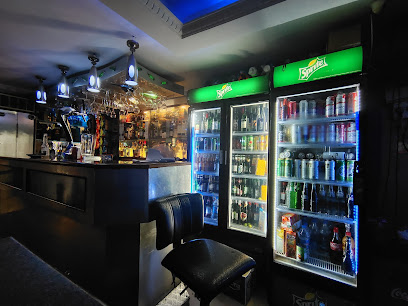
Soho
Discover the vibrant nightlife at Soho in Panaji, where great drinks, lively music, and a welcoming atmosphere await every tourist.
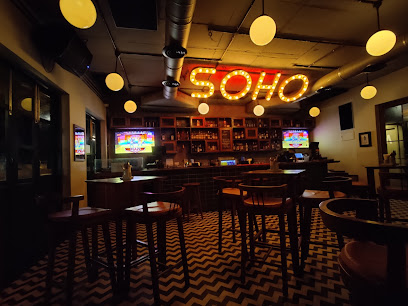
Lounge Terminal
Experience the flavors of Goa at Lounge Terminal, a stylish bar and restaurant with stunning views in Panaji.
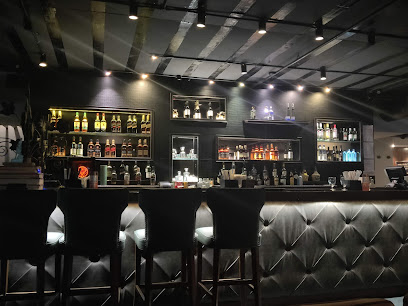
K BAR
Experience the vibrant flavors and lively atmosphere of K BAR in the heart of Panaji, Goa, where culinary delight meets local charm.
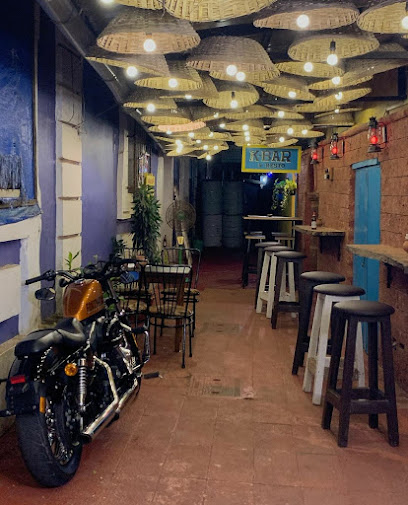
Pergola Bar & Restaurant
Discover the lively charm of Pergola Bar & Restaurant in Panaji, where family-friendly dining meets a vibrant nightlife atmosphere.
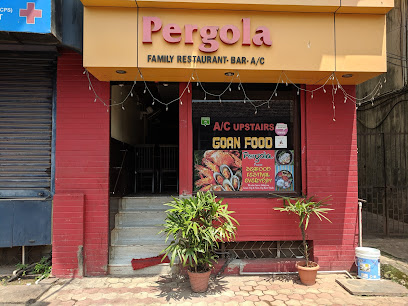
Miguel's - Cocktails & Petiscos
Experience the vibrant nightlife of Goa at Miguel's, a cocktail bar offering innovative drinks and delightful petiscos in a lively atmosphere.
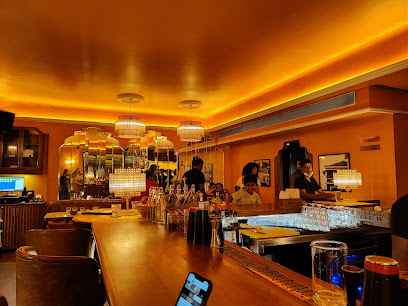
BAR 51
Discover the vibrant energy of BAR 51, a premier cocktail bar and restaurant in Panaji, Goa, perfect for nightlife and culinary delights.
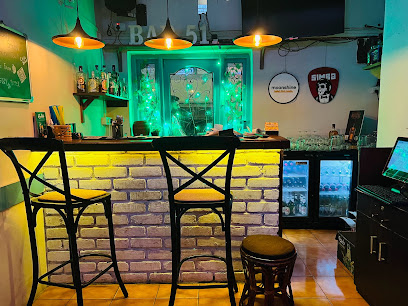
Isabella's Tapas Bar
Discover the vibrant flavors of Spain at Isabella's Tapas Bar in Panaji, Goa, where culinary tradition meets modern flair for an unforgettable dining experience.
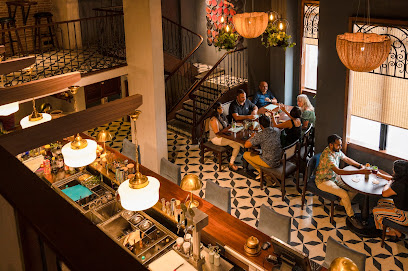
Pinch Bistro & Bar
Experience the vibrant nightlife and exquisite cuisine at Pinch Bistro & Bar, the ultimate pub destination in the heart of Goa.
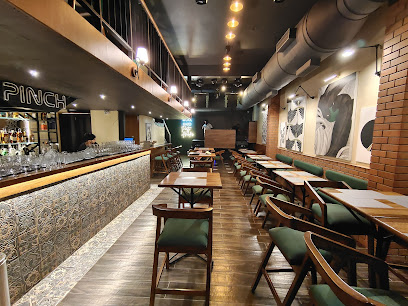
Ace`s The Pub & Restaurant
Discover the vibrant spirit of Goa at Ace's The Pub & Restaurant, where delightful cuisine meets a lively atmosphere in the heart of Panaji.
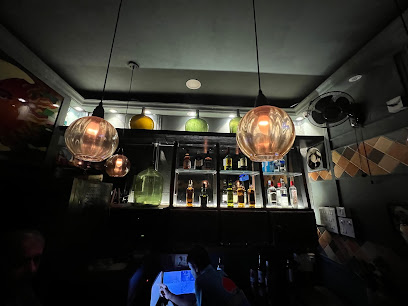
Publix Bar & Wine Shop
Discover the best of Goa's local flavors at Publix Bar & Wine Shop, where great drinks meet a vibrant atmosphere in Panaji.
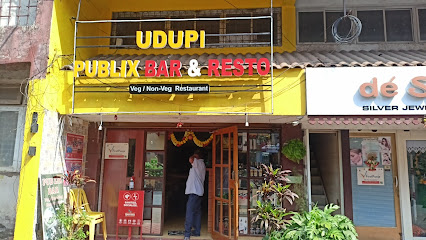
Simply Grills
Experience the flavors of Goa at Simply Grills, where grilled seafood and barbecue delights await in a charming seaside setting.
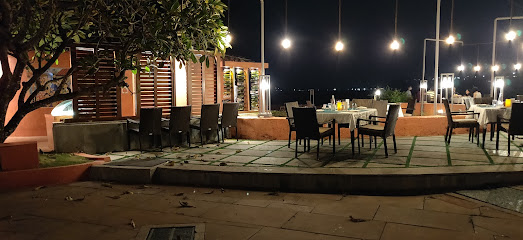
Gandharav Bar & Restaurant
Experience the vibrant flavors of Goa at Gandharav Bar & Restaurant, where great food and drinks come together in a lively atmosphere.

C D Bar & Restaurant
Discover the flavors of Goa at C D Bar & Restaurant, a lively venue offering delicious cuisine and a vibrant atmosphere in Altinho, Panaji.

Travel experiences inspired by this city
Explore more travel diariesLocal Phrases
-
- Helloनमस्कार
[Namaskar] - Goodbyeविदाय
[Vidaya] - Yesहो
[Ho] - Noनका
[Naka] - Please/You're welcomeकृपया
[Krupaya] - Thank youधन्यवाद
[Dhanyavad] - Excuse me/Sorryक्षमा करा
[Kshama kara] - How are you?तुम्चं कसं आहे?
[Tumcham kasam ahe?] - Fine. And you?ठीक आहे. आणि तुम्ही?
[Theek ahe. Ani tumhi?] - Do you speak English?तुम्हाला इंग्रजी येते का?
[Tumhala ingraji yete ka?] - I don't understandमला समजत नाही
[Mala samjat nahi]
- Helloनमस्कार
-
- I'd like to see the menu, pleaseकृपया मेनू पाहू इच्छित आहे
[Krupaya menu pahu ichhit ahe] - I don't eat meatमी मांस खात नाही
[Mi mans khat nahi] - Cheers!उद्घाटन!
[Udghatan!] - I would like to pay, pleaseकृपया मी भर पाहिजे
[Krupaya mi bhar pahije]
- I'd like to see the menu, pleaseकृपया मेनू पाहू इच्छित आहे
-
- Help!मदत!
[Madat!] - Go away!ओळखा!
[Olakha!] - Call the Police!पोलिसला कॉल करा!
[Polisla call kara!] - Call a doctor!डॉक्टरला कॉल करा!
[Doctorla call kara!] - I'm lostमी हरलोय
[Mi harloy] - I'm illमला वेळच आहे
[Mala velach ahe]
- Help!मदत!
-
- I'd like to buy...मला विकत घेण्याची इच्छा आहे
[Mala vikat ghenyachi ichha ahe] - I'm just lookingमी फक्त बघत आहे
[Mi fakt baghat ahe] - How much is it?ते किती आहे?
[Te kiti ahe?] - That's too expensiveते खूप महाग आहे
[Te khup mahag ahe] - Can you lower the price?तुम्ही किंमत कमी करू शकता का?
[Tumhi kimat kamee karu shakta ka?]
- I'd like to buy...मला विकत घेण्याची इच्छा आहे
-
- What time is it?किती वाजलं आहे?
[Kiti wajal ahe?] - It's one o'clockएक वाजलं आहे
[Ek wajal ahe] - Half past (10)अर्धा वाजलं (दहा)
[Ardha wajal (daha)] - Morningसकाळ
[Sakal] - Afternoonउन्हाळी
[Unhali] - Eveningसंध्याकाळ
[Sandhyakal] - Yesterdayकाल
[Kal] - Todayआज
[Aaj] - Tomorrowउद्या
[Udya] - 1एक
[Ek] - 2दोन
[Don] - 3तीन
[Teen] - 4चार
[Char] - 5पाच
[Pach] - 6सहा
[Saha] - 7सात
[Sat] - 8आठ
[Ath] - 9नऊ
[Nau] - 10दहा
[Daha]
- What time is it?किती वाजलं आहे?
-
- Where's a/the...?...कुठे आहे?
[...Kuthe ahe?] - What's the address?पत्ता काय आहे?
[Patta kay ahe?] - Can you show me (on the map)?तुम्ही मला दाखवू शकता का?
[Tumhi mala dakhavu shakta ka?] - When's the next (bus)?पुढचं (बस) कधी आहे?
[Pudhach (bas) kadhi ahe?] - A ticket (to ....)एक तिकीट (...ला)
[Ek ticket (...la)]
- Where's a/the...?...कुठे आहे?
History of Panaji
-
In 1510, under the command of Afonso de Albuquerque, the Portuguese captured the city of Goa from the Bijapur Sultanate. Panaji, then a small village known as Pangim, gradually began to gain importance as a strategic location along the Mandovi River. The Portuguese influence is still evident in the city's architecture, cuisine, and cultural practices.
-
In 1843, the Portuguese moved the capital of their Indian territories from Old Goa to Panaji. This shift was due to a plague that devastated Old Goa and the strategic advantage of Panaji's location. The city was renamed Nova Goa and underwent significant urban development, including the construction of administrative buildings, churches, and residential quarters.
-
Fontainhas, the Latin Quarter of Panaji, is a testament to the rich Portuguese architectural heritage. Established in the late 18th century, this area features narrow winding streets, colorful houses with overhanging balconies, and tiled roofs. The St. Sebastian Chapel, built in 1880, is a prominent landmark in this area, reflecting the religious and cultural life of the time.
-
Despite being under Portuguese rule for over four centuries, Panaji and the rest of Goa remained culturally distinct from the rest of India. In the mid-20th century, a strong movement for liberation from Portuguese rule gained momentum. On December 19, 1961, Indian armed forces conducted Operation Vijay, leading to the annexation of Goa and the integration of Panaji into the Indian Union.
-
After its liberation from Portuguese rule, Panaji underwent significant development and modernization. The city's infrastructure improved, and new public buildings, educational institutions, and cultural centers were established. Today, Panaji is known for its vibrant blend of Indian and Portuguese cultures, attracting tourists from around the world.
-
St. Francis Xavier, a missionary who played a key role in spreading Christianity in Goa, is celebrated with great fervor in Panaji. His remains are housed in the Basilica of Bom Jesus in Old Goa, but Panaji hosts numerous events and processions during the annual feast held in December. This festival highlights the city's deep-rooted religious traditions and cultural diversity.
-
One of the most vibrant cultural events in Panaji is the annual Carnival, which takes place in February or March. Introduced by the Portuguese, this festival features parades, music, dance, and elaborate costumes. The Carnival reflects the city's multicultural ethos and offers a glimpse into its festive spirit and communal harmony.
-
Panaji has been a significant center for Konkani literature and art. The city hosts numerous cultural events, including literary festivals, art exhibitions, and theater performances. The Kala Academy, established in 1970, is a prominent cultural institution in Panaji, promoting local artists and preserving the region's artistic heritage.
Panaji Essentials
-
Panaji, also known as Panjim, is the capital city of the Indian state of Goa. The nearest airport is Goa International Airport (Dabolim Airport), approximately 30 kilometers away. From the airport, you can take a taxi or a pre-booked airport transfer to Panaji, which usually takes around 45 minutes. If you are arriving by train, the nearest major railway station is Madgaon (Margao), which is about 35 kilometers away. From Madgaon, you can hire a taxi or take a local bus to reach Panaji. Additionally, Panaji is well-connected by road, and you can take long-distance buses from major cities like Mumbai, Bangalore, and Pune.
-
Panaji offers various modes of transportation for getting around the city. Auto-rickshaws are a common and convenient way to travel short distances within the city. Taxis are available for longer trips and can be hailed on the street or booked through ride-sharing apps. Public buses operated by the Kadamba Transport Corporation (KTC) connect Panaji to other parts of Goa, including popular tourist destinations like Calangute, Baga, and Anjuna. For a more local experience, consider renting a scooter or a bicycle, which are popular among tourists and locals alike.
-
The official currency in Panaji, as in the rest of India, is the Indian Rupee (INR). Credit and debit cards are widely accepted in hotels, restaurants, and larger shops. However, it is advisable to carry some cash for smaller establishments, street vendors, and local markets. ATMs are readily available throughout the city, but it's a good idea to withdraw sufficient cash before traveling to more remote areas. Currency exchange services are also available at the airport, hotels, and authorized exchange centers in the city.
-
Panaji is generally a safe city for tourists, but it is important to take standard precautions. Avoid walking alone at night in poorly lit areas and keep an eye on your belongings in crowded places. Petty crimes like pickpocketing can occur, especially in busy markets and tourist spots. While Panaji doesn't have specific high-crime areas targeting tourists, it's always best to stay vigilant. Avoid accepting food or drinks from strangers and be cautious while using ATMs.
-
In case of an emergency, dial 112 for immediate assistance, which is the all-in-one emergency number in India. For medical emergencies, Goa Medical College and Hospital is the nearest major hospital with emergency services. There are also several private hospitals and clinics in Panaji. It is recommended to have travel insurance that covers medical emergencies. For minor health issues, numerous pharmacies in the city can provide over-the-counter medications. For police assistance, the Panaji Police Station is centrally located and can be contacted for help.
-
Fashion: Do dress modestly, especially when visiting religious sites. Avoid wearing revealing clothing. Religion: Do respect local customs and traditions. Always remove your shoes before entering temples and religious places. Public Transport: Do be respectful to fellow passengers. Don’t eat or drink on public transport. Greetings: Do greet people with a 'Namaste' or a handshake. A smile goes a long way in making connections. Eating & Drinking: Do try local Goan delicacies and accept food offerings graciously. Don’t refuse hospitality, as it is considered impolite.
-
To experience Panaji like a local, visit the bustling Panaji Market where you can buy fresh produce, spices, and traditional Goan goods. Take a stroll along the Mandovi River promenade in the evening to enjoy the local ambiance. Don’t miss visiting the Fontainhas Latin Quarter, which offers a glimpse into Goa's Portuguese heritage with its colorful houses and narrow streets. Additionally, try the local Goan cuisine at traditional eateries like Ritz Classic or Venite Restaurant. Engaging with locals can provide deeper insights into the city's culture and history.
Trending Landmark in Panaji
Nearby Cities to Panaji
-
Things To Do in Goa
-
Things To Do in Pune
-
Things To Do in Mumbai
-
Things To Do in Mysore
-
Things To Do in Bengaluru
-
Things To Do in Nashik
-
Things To Do in Aurangabad
-
Things To Do in Kozhikode
-
Things To Do in Coimbatore
-
Things To Do in Kochi
-
Things To Do in Chennai
-
Things To Do in Puducherry
-
Things To Do in Pondicherry
-
Things To Do in Vadodara
-
Things To Do in Madurai













